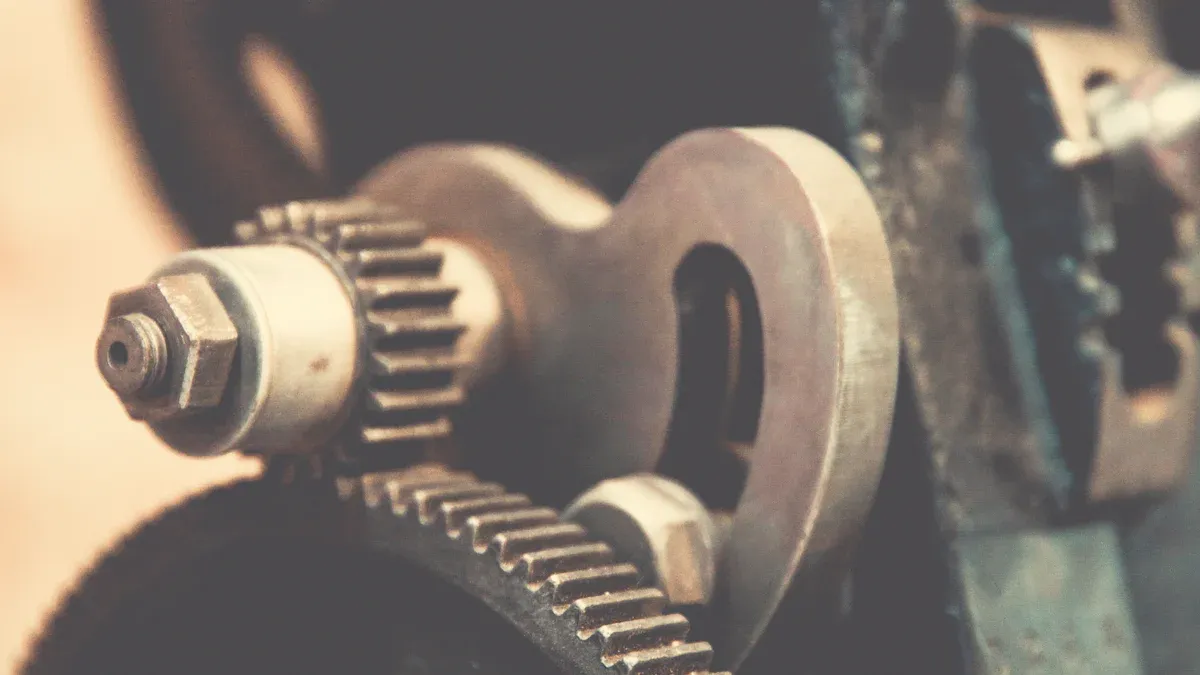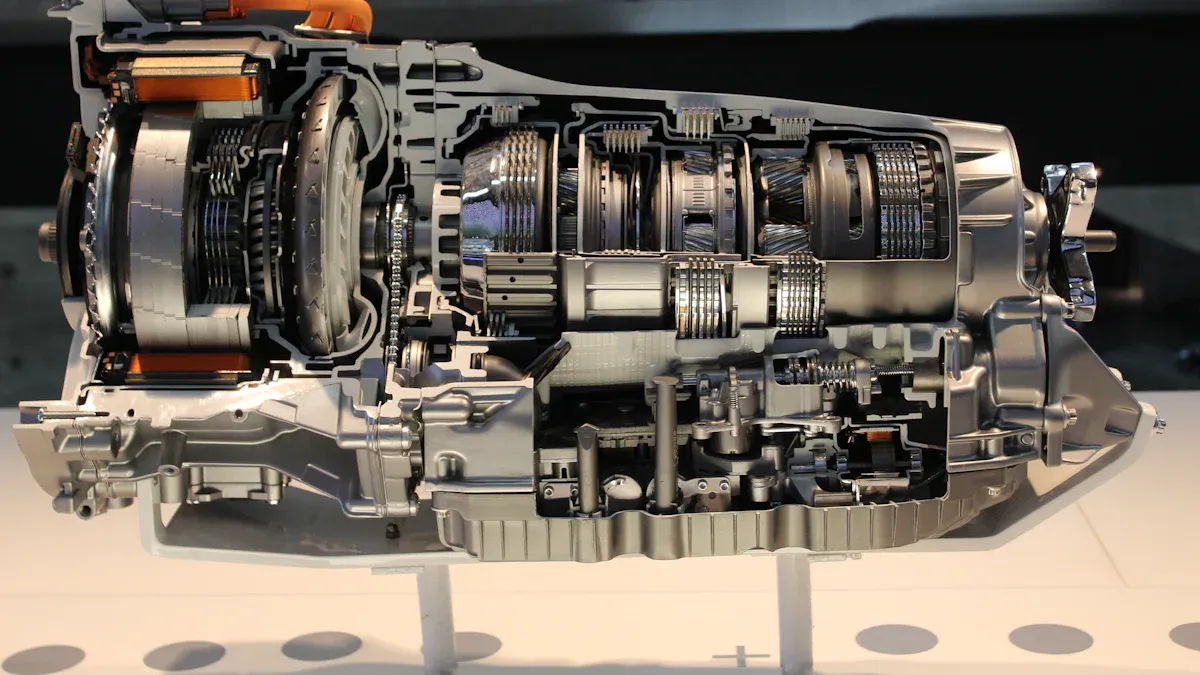Have you ever wondered if a transmission and a gearbox mean the same thing? You might hear both terms at the repair shop, but they do not refer to the same part. Transmission moves power from the engine. The gearbox changes speed and torque. Understanding the distinction helps you care for your Transmission Gearbox.
The transmission is the whole system that sends power from the engine to the wheels. The gearbox is only one part inside the transmission. The gearbox changes how fast and strong the car moves.
There are different types of gearboxes, like manual and automatic. These types change how your car drives. They also change how you need to take care of your car.
If you know how the transmission and gearbox work together, you can find problems early. This helps you save money on repairs. It also helps your car run well.

You see a gearbox every time you drive. In cars, a gearbox is a machine that moves energy from the engine to other parts. It has gears that fit together inside a box. The gearbox makes more torque and less speed. This helps your car go at different speeds. It also helps your car handle many road types. Gear ratios depend on gear size and teeth number. Gearboxes started as simple belts. Now, they use special gear pairs. Today, the gearbox is very important for moving power and changing torque.
The gearbox links the engine to the driveline. It changes torque and speed for your needs. When you shift, the gearbox changes the force to the wheels. Big gears give more torque but less speed. Small gears give less torque but more speed. Some gearboxes use planetary gear systems. These have sun gears, planet gears, and annulus rings. They help the gearbox change torque and speed. This makes your car run smoothly. The gearbox helps your engine work well on any road.
Tip: Take care of your gearbox often. This stops big repairs and keeps your car working well.
There are many gearbox types in cars. Each type works in its own way and has special good points.
Gearbox Type | Mechanism Description | Key Features / Pros | Cons / Notes |
|---|---|---|---|
Manual Transmission (MT) | You pick gears with a clutch and stick. | Full control, better gas mileage | Not good for heavy traffic |
Automatic Transmission (AT) | Gears change by themselves with speed and load. | Easy to use, less stress | Uses more gas |
Continuously Variable Transmission (CVT) | Uses belts and pulleys for many gear ratios. | Smooth, light, and efficient | Can feel odd or less fun |
Dual-Clutch Transmission (DCT) | Has two clutches for quick gear changes. | Very fast shifts, great efficiency | Repairs can cost a lot |
Automated Manual Transmission (AMT) | Manual gearbox with shifting done for you. | Cheap, saves gas | Can feel rough sometimes |
Pick the gearbox type that matches how you drive. Each one changes how your car feels and works.

A transmission system has many important parts. These parts work together to move power from the engine to the wheels.
The gearbox is the main part of the transmission system. It has gear sets that change speed and torque. Manual transmissions use synchronizers for smooth gear changes.
The torque converter takes the place of the clutch in automatic transmissions. It uses fluid to move power and lets your car stop without stalling.
Transmission fluids keep the system cool, clean, and working well. You need special fluids for manual and automatic transmissions.
Drivetrain parts like the driveshaft, axle, and differential send power to the wheels. The differential lets wheels turn at different speeds when you go around a curve.
Electronic controls and sensors, like speed and temperature sensors, help the transmission system shift gears at the right time. These sensors send signals to the car’s computer for better driving.
Tip: Check your transmission fluid often. Clean fluid helps your transmission system last longer.
The transmission system is very important for your car. It sends engine power to the wheels. It helps your car speed up, slow down, and drive smoothly. The transmission system changes gear ratios to fit how you drive. This helps you save fuel and makes driving easier.
Manual, automatic, and CVT transmissions each have their own good points. Manual transmissions give you more control. Automatic transmissions make driving simpler. CVTs give smooth and steady power. The transmission system uses gears, clutches, and sometimes a transmission control module to make gear changes feel smooth. Sensors and computers help the transmission system adjust to the road and how you drive.
Transmission systems are used in cars, trucks, and factories. In cars, the transmission system focuses on comfort, saving fuel, and smooth driving. Automotive transmission systems use smart sensors and computers to shift gears at the best time.
In factories, transmission systems handle heavy loads and work for long hours. Industrial transmission systems may use different gearbox types and stronger parts. These systems focus on power and lasting a long time, not comfort.
Both automotive and industrial transmission systems use gearboxes, but their designs match their jobs. You need to know the difference if you work with cars or machines.
You might think transmission and gearbox mean the same thing, but they do not. People often mix up these words. Here are some main things you should know:
A transmission is the whole system that sends engine power to the wheels. It has the gearbox, clutch, and other parts.
The gearbox is just one part inside the transmission. It uses gears to change how fast or strong the power is.
The transmission has extra parts like the clutch, torque converter, and driveshaft. These help move power in a smooth way.
The gearbox, sometimes called the “transmission box,” is for changing gear ratios and torque.
There are different types of transmission gearboxes, like manual, automatic, and CVT. Each type has its own way to shift gears and handle power.
Feature | Transmission | Gearbox |
|---|---|---|
What it is | Full system for power delivery | Part inside the transmission |
Main job | Controls, directs, and shifts power | Changes speed and torque with gears |
Parts included | Gearbox, clutch, driveshaft, sensors | Gears, shafts, synchronizers |
Types | Manual, automatic, CVT, DCT, AMT | Manual, automatic, CVT, DCT, AMT |
Input/Output | Gets power from engine, sends to wheels | Gets power from transmission, sends to driveline |
Control | Uses sensors, computers, hydraulics | Uses mechanical gears, synchronizers |
Note: The transmission gearbox works together as a team. The transmission system controls when and how the gearbox changes gears.
The transmission and gearbox work together every time you drive. The transmission has the gearbox, clutch, and other parts. When you press the gas pedal, the engine sends power to the transmission. The transmission decides how much power goes to the wheels. The gearbox inside changes speed and torque by shifting gears.
Modern cars use sensors and computers to control the transmission gearbox. These systems help the car shift gears at the right time. For example, the Engine Management System gives data to the transmission. The Transmission Control Module uses this data to pick the best gear. This teamwork helps your car run smoothly and saves gas.
In fast cars, the transmission gearbox uses special parts for quick gear changes. Dual-clutch and CVT systems use advanced controls for better speed and comfort. The gearbox and transmission must work together for the best driving experience.
Tip: Check your transmission gearbox parts often. Watch for leaks, strange sounds, or shifting problems.
Knowing the difference between transmission and gearbox helps you care for your car. If you know how the transmission gearbox works, you can find problems early and avoid big repair bills.
The transmission controls how much torque goes to the wheels. The gearbox changes gear ratios for your speed and the road.
Problems in the gearbox can wear out the clutch. A bad clutch can also hurt the gearbox and the whole transmission.
Most transmission failures come from gear problems. In most cars, gear failures cause about 60% of all transmission issues.
Repairs can cost a lot. Small repairs may cost a few hundred dollars. A full transmission replacement can cost $4,000 to $7,000 or more.
Manual transmissions are usually cheaper to fix than automatics. Fixing problems early saves money and stops bigger issues.
You can spot trouble by listening for noises, checking for leaks, or noticing hard shifts. If you know the difference between gearbox and transmission, you can tell your mechanic what is wrong. This helps you get the right repair faster.
Good to know: Taking care of your transmission gearbox can help save gas, lower pollution, and make your car last longer.
The transmission gearbox changes how your car feels on the road. Manual transmissions give you more control and cost less to fix. Automatics are easier to use, especially in traffic, but cost more to repair. The type you choose affects how you drive, how much gas you use, and how you take care of your car.
Knowing the basics about gearbox and transmission helps you make smart choices. You can decide about repairs, upgrades, or even which car to buy. When you know how the transmission gearbox works, you can keep your car running well and avoid big problems.
You now know the difference between transmission and gearbox. You can spot issues early by listening for noises, checking fluid, and watching for shifting problems.
Schedule regular inspections.
Use the right fluid.
Keep a log of symptoms.
Learning more helps you keep your car running smoothly.
You use a Transmission Gearbox to control power and speed. The gearbox inside changes gear ratios. The Transmission Gearbox includes more parts than just gears.
Transmission Gearbox parts, like gears and clutches, help you shift smoothly. Good transmission gearbox parts make your car run better and last longer.
Yes. You find manual, automatic, and CVT transmission gearbox types. Each type gives you a different driving feel and changes how you shift gears.